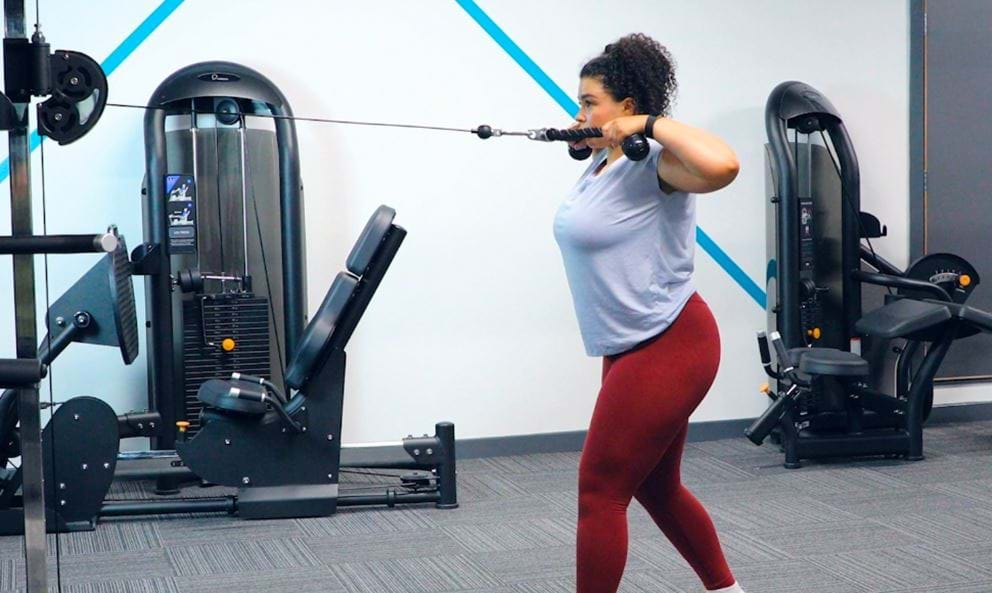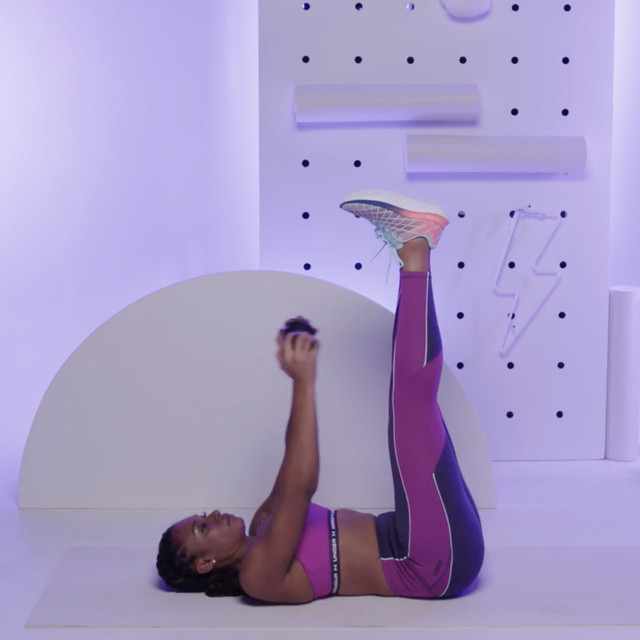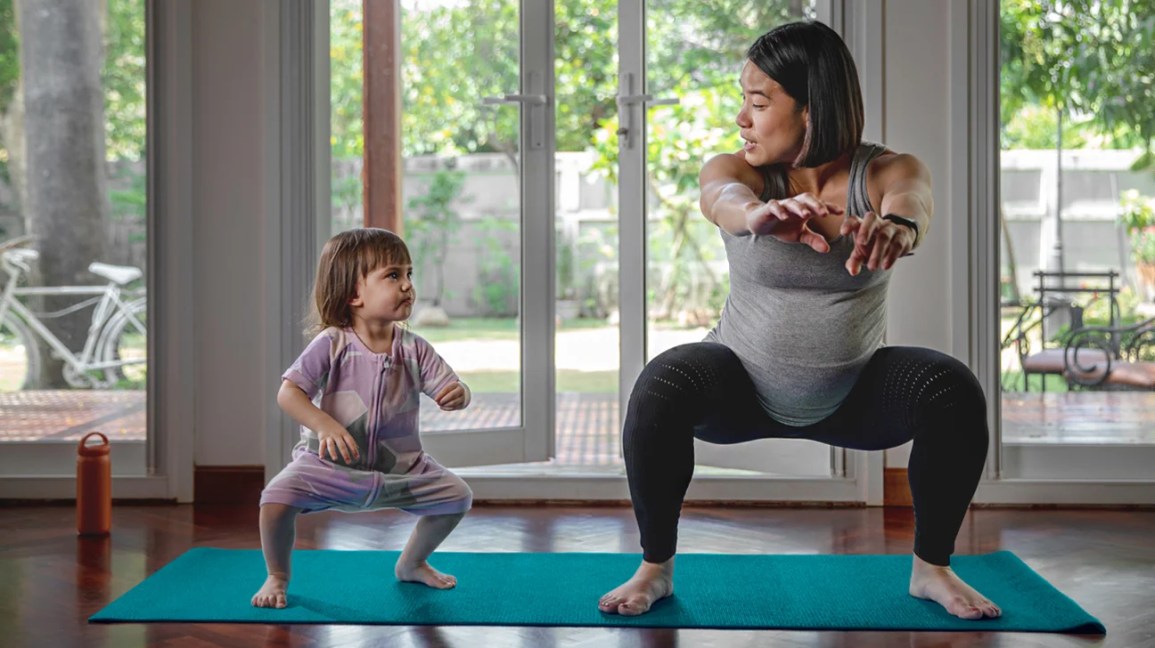Five essential exercises for strong shoulders are shoulder presses, lateral raises, reverse flyes, upright rows, and face pulls. These workouts target various muscles for balanced strength.
Developing strong shoulders is fundamental for both functional fitness and upper body aesthetics. The shoulder joint’s unique range of motion allows for diverse exercises that can enhance strength, stability, and flexibility. Effective shoulder workouts not only improve your ability to perform everyday tasks with ease but also reduce the risk of injury by fortifying the muscles around this highly mobile joint.
Whether you’re a seasoned athlete or just starting on your fitness journey, incorporating shoulder exercises into your routine is pivotal. A well-structured shoulder workout can yield significant benefits, from better posture to improved performance in sports and other physical activities. Let’s dive into these exercises that are designed to build powerful, resilient shoulder muscles.

Credit: www.facebook.com
Creating Your Shoulder Strength Routine
Strong shoulders are the pillars that can elevate your physical capabilities to the next plateau. Whether you’re reaching to put away groceries or gearing up for an overhead lift, the health of your shoulder muscles plays a critical role. Crafting a shoulder strength routine is like assembling a puzzle. Each piece must fit perfectly to see the bigger picture of physical prowess. In this guide, we’ll build that puzzle, ensuring every move aligns seamlessly for peak performance and sturdy shoulders.
Choosing The Right Exercises
Selecting exercises is the first step toward robust shoulders. Aim for movements that engage all parts of the shoulder. Consider the following when building your routine:
- Compound exercises such as overhead presses work multiple muscles.
- Isolation moves like lateral raises hone in on one area.
- Rotator cuff exercises ensure joint health and mobility.
Rotate these exercises to challenge the shoulders from various angles. Always start with a light warm-up to prepare the muscles and joints.
Balancing Your Workout Schedule
Exercise frequency and rest are key to shoulder development. Strike a balance between workout days and recovery. Here’s a simple template:
| Day | Activity |
|---|---|
| Monday | Shoulder workout |
| Wednesday | Upper body routine |
| Friday | Shoulder workout |
| Sunday | Active recovery |
This allows muscles to recover and grow after every session. Listen to your body to avoid overtraining. Rotate exercises each workout to target different shoulder parts and improve overall muscle strength.
Warming Up For Shoulder Safety
Shoulder workouts demand not just strength but also safe practices. Before diving into shoulder exercises, it’s crucial to warm up correctly. Proper warming up prepares the muscles, supports joint health, and prevents injuries.
The Importance Of Dynamic Stretching
Dynamic stretching offers a double advantage for shoulder workouts. It increases blood flow and enhances flexibility, making muscles ready for action. Engaging in dynamic stretches means you’re less likely to suffer from strain or injury.
- Arm circles to loosen up
- Band pull-aparts for resistance
- High pulls to activate your upper body
Shoulder Mobility Drills
Mobility drills are vital for shoulder health. They help maintain a full range of motion and reduce stiffness. Consistent shoulder mobility exercises can lead to improved performance and less discomfort during workouts.
| Exercise | Benefit |
|---|---|
| Wall slides | Enhances joint movement |
| Dowel rod stretches | Increases shoulder flexibility |
- Start with wall slides against a smooth surface.
- Proceed with dowel rod stretches, holding a stick in front of you.
- Perform these drills for 5-10 minutes before lifting.
Dumbbell Shoulder Press: The Fundamental Move
Dumbbell Shoulder Press: The Fundamental Move, often considered the cornerstone of any shoulder-strengthening routine, is both simple and effective. Utilizing just a pair of dumbbells, this exercise targets every major shoulder muscle. Let’s dive into the correct technique to maximize its benefits and explore some variations to keep your workouts challenging.
Proper Technique And Posture
Getting your form right in the Dumbbell Shoulder Press is key for preventing injury and maximizing muscle engagement. Here’s a step-by-step guide:
- Sit or stand with feet shoulder-width apart.
- Hold a dumbbell in each hand at shoulder height, elbows bent at 90 degrees.
- Exhale and press the weights upward until your arms are fully extended above your head.
- Pause briefly at the top and inhale as you lower the dumbbells back to the starting position.
Ensure your back is straight and core is engaged throughout the movement. Avoid locking your elbows or arching your back to push the weights up.
Variations For Intensity
Once the basic dumbbell shoulder press becomes a comfortable part of your regimen, add intensity with these variations:
- Arnold Press: Start with palms facing towards you and rotate them outward as you lift.
- Push Press: Use legs slightly to push weights up, increasing momentum and intensity.
- Single-Arm Press: Engage core more by pressing one dumbbell at a time.
- Negative Press: Slow down the lowering phase to increase time under tension.
Incorporate these variations to not only add diversity to your workout but also to challenge your muscles in new ways. This helps in continued strength gains and shoulder stability.
Lateral Raises: Broadening Your Horizons
Lateral Raises: Broadening Your Horizons are essential for well-rounded shoulder development. This exercise isolates the lateral part of the shoulder muscles. It adds definition and strength to your shoulder profile. With correct form and a variety of methods, lateral raises ensure your shoulders are not just strong, but also resilient and balanced.
Mastering The Lift For Maximum Gain
To get the most from lateral raises, begin with your feet shoulder-width apart. Stand tall and keep a slight bend in your elbows. Bring the dumbbells out to your sides until your arms are parallel with the floor. Ensure your core remains engaged. A good lift involves controlled movement, both up and down. Repeat for a set count to ensure consistency and avoid swinging for controlled strength gains.
Incorporating Resistance Bands
Adding resistance bands can take your lateral raises to a new level. They provide constant tension throughout the exercise. This challenges your shoulder muscles differently from dumbbells. Secure the band under your feet and hold the ends in each hand. Keep the same form as you would with weights. As you lift your arms out to the sides, the bands will increase resistance. This builds muscle endurance and strength over time.
- Start with low resistance to perfect the movement.
- Gradually increase resistance as your strength improves.
- Keep movements smooth and avoid jerking motions for effective training.
Face Pulls: The Posture Protector
As we spend more time at our desks, healthy posture and shoulder strength become crucial. An exercise known for its effectiveness in strengthening shoulder muscles and improving posture is the face pull. It specifically targets the upper back and shoulders, making it an excellent addition to any workout routine. This section breaks down everything you need to know about face pulls, an incredible exercise for anyone aiming to develop strong, balanced shoulders.
Setting Up For The Exercise
Proper setup is key to maximizing the benefits of face pulls. Follow these steps for a safe start:
- Attach a rope to a pulley system and adjust it to upper chest height.
- Grab the rope with both hands, palms facing each other.
- Step back until your arms are fully extended in front of you.
- Assume a stable stance with feet shoulder-width apart.
- Keep a slight bend in your knees and engage your core.
Benefits For Shoulder Health
The reasons to include face pulls in your routine are compelling:
- Boosts shoulder stability by strengthening the rotator cuff muscles.
- Enhances posture by working the rear deltoids and upper back.
- Reduces injury risk by balancing the shoulder and neck muscles.
- Increases functional strength for everyday activities.
- Improves mobility and flexibility in the shoulder joint.
With consistent practice, face pulls can be a game-changer for your shoulder health and overall posture. Integrate them into your workout and feel the difference in strength and stability.

Credit: www.puregym.com
Arnold Presses: A Twist On Shoulder Training
The Arnold Press stands out in shoulder training. It was named after the legendary bodybuilder Arnold Schwarzenegger. He combined a twist with a press to challenge the shoulders. This move has become a staple for athletes seeking strong, shapely shoulders.
Execution Of The Arnold Press
- Start with dumbbells at shoulder height, palms facing you.
- Press the weights overhead, rotating your wrists.
- Your palms should face forward at the top of the move.
- Lower back to the start with a reverse twist.
This rotation hits different angles of the shoulder muscles. Keep your back straight and core engaged throughout the exercise. Don’t rush the movement. Control is key.
Tips For Progressive Overload
- Start with lighter weights to master the form.
- Increase the weight gradually over time.
- Add an extra set or more reps as you get stronger.
- Shorten rest periods for added intensity.
- Try variations like seated Arnold Press for a challenge.
Progressive overload is essential for muscle growth. It should be a part of your exercise routine. Ensure a balance between pushing yourself and maintaining proper form.
Shrugs: Building The Traps
Strong shoulders aren’t complete without sculpted traps. Shrugs work these muscles. They’re simple but effective. Proper form is crucial. It prevents injury and maximizes gains. Let’s dive into shrugs and how to perform them effectively.
Dumbbell Vs. Barbell Shrugs
Dumbbell and barbell shrugs target your traps. Each has its benefits.
| Dumbbell Shrugs | Barbell Shrugs |
|---|---|
|
|
Avoiding Common Mistakes
Mistakes can lead to less effectiveness and injury. Know what to watch for:
- Excessive weight: Compromises form.
- Rolled shoulders: Risk of injury higher.
- Rapid bouncing: Decreases muscle work.
- Ignoring full range: Limits trap development.
Consistent training and proper form are key. Your shoulders and traps will thank you. Grab those weights and let’s build strength safely!
Cooling Down: Essential Shoulder Stretches
After powering through shoulder exercises, it’s time to cool down. Cooling down relaxes your muscles. It prepares them to repair and grow stronger. Just as a warm-up primes your body for action, proper stretching prevents stiffness and injury. Let’s delve into stretches that can become a key part of any shoulder workout.
Passive Stretches For Recovery
Passive stretches aid recovery by using external forces, like gravity or a tool. They don’t require muscle contractions. Here’s a list of stretches you should consider:
- Cross-Body Shoulder Stretch: Reach your arm across your chest. Use the other hand to hold it gently.
- Child’s Pose: Sit back on your heels. Stretch your arms forward on the ground. Feel the pull in your shoulders.
Using Foam Rollers For The Shoulders
Foam rollers can be great tools for shoulder stretches. They help release tension. Here’s how to use them:
- Lie on your side with a foam roller under your arm.
- Slowly roll back and forth. Focus on sore spots.
- Switch sides after a minute or two.
Remember, stretches should feel soothing, not painful. Listen to your body. If it hurts, ease up or stop.
Maintaining Strong Shoulders
Achieving strong shoulders is more than just lifting weights. It’s about keeping them strong for everyday tasks. To keep your shoulders resilient and robust, consistent exercises tailored for strength and mobility are essential. Alongside workouts, regular check-ups and proper nutrition play a crucial role. Below, learn vital tips for maintaining shoulder strength and integrity.
Regular Assessment Of Shoulder Strength
It’s vital to know your baseline. Test your shoulder strength periodically. This ensures your exercises are effective. Quick and easy tests can be done at home or with a professional. Look out for any imbalance between sides. Consistent assessments help detect issues early. This lets you adjust your exercises to avoid injury.
Nutritional Support For Muscle Repair
Proper nutrition is key for muscle repair. Lean proteins, healthy fats, and complex carbohydrates are must-haves. They aid in muscle recovery.
- Protein rebuilds muscle fibers after workouts.
- Fats provide energy and reduce inflammation.
- Carbs restore glycogen stores for energy.
Be sure to include vitamins and minerals too. Vitamin C and Omega-3s are excellent for joint health. Hydration also plays a pivotal role in maintaining muscle elasticity. Drink plenty of water throughout the day.
| Nutrient | Function | Suggested Amount |
|---|---|---|
| Protein | Muscle repair | 1.2-1.7g/kg body weight |
| Fats | Energy and reduced inflammation | 20-35% of daily calories |
| Carbohydrates | Restore energy | 45-65% of daily calories |

Credit: www.stylecraze.com
Frequently Asked Questions Of 5 Exercises For Strong Shoulders
What Is The Best Exercise To Strengthen Your Shoulders?
The overhead press is the best exercise for strengthening shoulders. It targets multiple shoulder muscles and improves overall shoulder stability and mobility. Perform with dumbbells or a barbell for effective results.
What Is The Number 1 Shoulder Exercise?
The number 1 shoulder exercise is the standing overhead barbell press. It targets multiple muscles and enhances shoulder strength and stability.
What Exercise Builds Shoulders The Most?
The overhead press is highly effective for building shoulder muscles. Dumbbell lateral raises also target this area effectively. Consistent training with proper form enhances results.
Is 3 Exercises For Shoulders Enough?
Yes, three shoulder exercises can be sufficient if they target all major deltoid muscle heads and incorporate progressive overload.
Conclusion
Strengthening your shoulders is essential for overall fitness. The five exercises outlined provide a solid foundation for building muscle and enhancing stability. Incorporate these moves into your routine for noticeable improvements. Remember, consistency is key. Now, it’s time to gear up and power through those shoulder workouts.
Stay strong and keep lifting!


